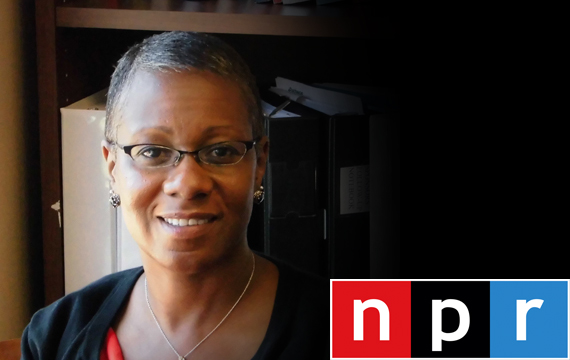LULU GARCIA-NAVARRO, HOST: Of the COVID cases reported in the United States, half are among Black and Latino people. And yet, in vaccine trials underway, only 15% of the participants are nonwhite. That could make a big difference in both how accurate vaccine studies are and also how fast a vaccine gets to the public. For more on this, we’re joined by Renee Mahaffey Harris, president of the Center for Closing the Health Gap in Cincinnati.
Good morning.

RENEE MAHAFFEY HARRIS: Good morning, Lulu.
GARCIA-NAVARRO: So you are not a doctor, but you do work in the health space. So what is your understanding of why it is so important to include a representative population in a vaccine trial?
HARRIS: Due to the fact that COVID-19 has had a disproportionate impact to Black and Latino people across this country, it is more paramount than ever that the trials be reflective of a bigger proportion of Black and Latino people. Many drugs in our country – frankly, we are not in those trials. And so what you’re beginning to see articles on is that the effects of that drug is not necessarily having the same impact that it should.
GARCIA-NAVARRO: There is a hurdle here, though – right? – because Black and Latino people are more unwilling to enroll in trials. Why is that?
HARRIS: History. For the Black community in particular, it’s the Tuskegee experiment.
GARCIA-NAVARRO: People have that in their mind.
HARRIS: People have that in their mind, and they feel that we are guinea pigs. And so when people start talking about research or drug trials or clinical trials, there is an immediate hand up – no, I’m not going to participate – because there is just a true mistrust of the medical and health care systems.
GARCIA-NAVARRO: So you were asked by one of the companies conducting vaccine trials to help them enroll more minorities. What did you say to them?
HARRIS: The response is, we need to know more. I’d want to know, you know, the three phases of research and trial development and understand what the representation has been in development of the trial. As so often happens, we are contacted to be participants but perhaps not included in the actual development of the trial. I would want to make sure that there are opportunities for people to understand what a clinical trial is, what this clinical trial in particular will do and why it’s important for us to be representative in the participation in the trial.
GARCIA-NAVARRO: Let’s say you decide that this is something worth doing. How do you then sell it to your community? I mean, I’ve seen stories about doctors going to Target and Walmart, trying to sort of recruit Latinos and African Americans to be part of the trial. That seems a bit of a scattershot approach. What do you think needs to happen more systemically to have people have faith that if they participate, they will be treated fairly and that there is transparency there?
HARRIS: Information is king, and I don’t believe that it is fair to go to places like Target and saying, hey, join this trial. I think it needs to start with working with organizations that are trusted in the Black and Latino communities to hold information sessions and Q & A and build some trust of sharing of information. I don’t know that those kind of conversations have taken place.
GARCIA-NAVARRO: What it brings to mind, though, if the ask is to be more inclusive and thoughtful – that you need more Black doctors, more Latino doctors and researchers so that these communities aren’t just brought in on the back end.
HARRIS: I think that’s my biggest concern that I was not aware of until I talked to the Cincinnati Medical Association’s president, Dr. Roosevelt Walker. And he said to me, we are all being asked about helping get people recruited for the trial, but we weren’t representative in the creation of the trial. Especially now more than ever with the murder of George Floyd and the elevation and activation of the fight against injustice and social justice in our country – race is a construct in health. Race is a construct in our lives. And so we have to ensure that there is representation. Less than 4% of physicians in this country are Black or Latino – right? – 4%. That doesn’t mean that we can’t be representative of the early part of creating the trial.
GARCIA-NAVARRO: That’s Renee Mahaffey Harris, president of the Center for Closing the Health Gap in Cincinnati.
Thank you very much.
HARRIS: Thank you, Lulu.